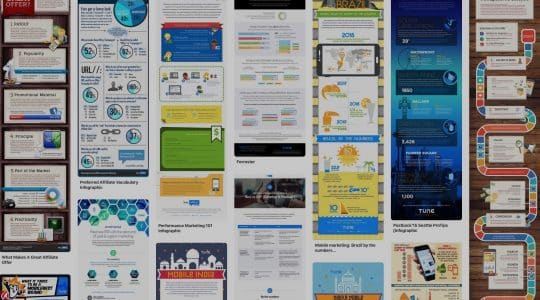
Mobile sales in the U.S. continue to rise, expected to comprise 45% of the $632 billion eCommerce market by 2020 according to a report by Business Insider.
Working with top mCommerce and eCommerce companies like eBay, Staples, and Sephora, TUNE helps the Fortune 1000 ensure they’re maximizing every stage of their funnel.
As a mobile marketer, you can’t afford to focus solely on one part — getting a lot of users but failing to convert them into purchases, or focusing so intently on the checkout experience that you fail to get new users to your app in the first place. In this blog post, we break down the key goals of each stage of the funnel, along with a few KPIs you can use to gauge your performance.
Top of funnel
The top of funnel is where consumers enter the sales process — becoming aware of their problem (say, they’re cold now that the weather’s changing) and assessing ways to fix it (purchasing a new fall jacket).
In the top of funnel, you’re working on attracting new users to your app out of all the other apps available. The more users you attract, the more you can guide them through the funnel. Your goals at this stage are to convince users not only to download your app but to sign up, sign in, and look around — which will increase your chances of a purchase later on.
A few important KPIs include:
- Count of first app purchases: The number of first-time app users who make purchases within your app. This shows you how well your app is attracting new users — and actually persuading them to buy. The first-time purchase KPI gives you a good idea if users will be serious buyers you can count on for high lifetime value later on.
- Sign-up conversion rates: The percentage of app downloads that results in a user signing up to use your app.
- Sign up and sign-in conversion rates: The first time a user signs into an app, which shows intent to buy and is therefore more meaningful than purely tracking app downloads.
- Catalog click-through rate: The percentage of home screen views that result in a product being clicked, resulting in an app user navigating to the product detail screen.
Middle of funnel
In the middle of the funnel, consumers are evaluating your brand and its products by shopping, browsing, and comparing items. The main goal of the middle of the funnel is to provide the best information you can to users so they feel confident enough to complete a purchase.
A few important KPIs include:
- Referrals per user: The average number of in-app referrals made per user. This metric can help you understand how engaged users are with your brand, and generate new users through word of mouth.
- Add to cart conversion rate: The percentage of product detail screen views that result in a product being placed in the shopping cart. You can use this KPI to determine the success of your product detail screens — if users can find all the info they need, they’re more likely to complete a purchase. Whereas if you notice low add-to-cart conversion rates, you may want to beef up your product detail screens, or monitor what other products (if any) users end up buying instead.
Bottom of funnel
The bottom of the funnel is where the magic happens — where all the buying actually takes place. At this point, users have discovered your app (top of funnel), browsed products and added them to their cart (middle of funnel), and must now complete the purchase.
At this stage, you want to make it as easy on users as possible and make them feel good about their purchase.
A few important KPIs include:
- Checkout conversion rate: The percentage of transactions that are ultimately purchased after having reached the cart. To improve the checkout conversion rate, remove any barrier to purchase, offer a well-timed discount, or give users further evidence why purchasing on your platform, at that time, is the right choice.
- Cart abandonment rate: The other half of the equation — the users who placed an item in the cart but opted not to actually checkout. You can reduce this rate the way you can improve the checkout conversion rate — simplifying the process and reinforcing the reasons to buy.
Making the metrics work for you
To discuss how TUNE can help you track and optimize every stage of your funnel, email us at [email protected].
Author
Becky is the Senior Content Marketing Manager at TUNE. Before TUNE, she handled content strategy and marketing communications at several tech startups in the Bay Area. Becky received her bachelor's degree in English from Wake Forest University. After a decade in San Francisco and Seattle, she has returned home to Charleston, SC, where you can find her strolling through Hampton Park with her pup and enjoying the simple things in life.



Leave a Reply
You must be logged in to post a comment.